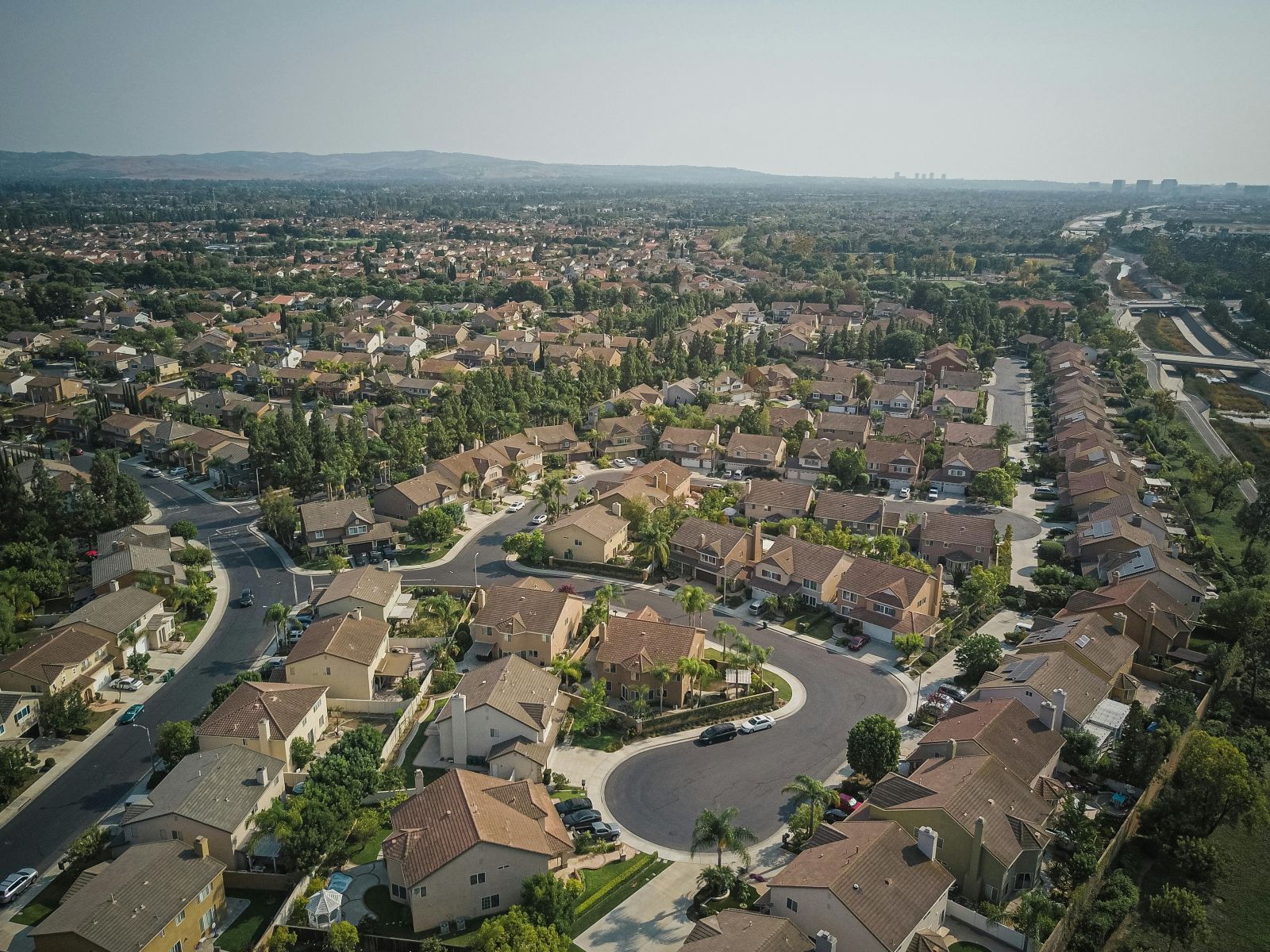2025 Complete Guide to Home Loan Refinancing
Home loan refinancing allows homeowners to replace their existing mortgage with one that better aligns with their current financial needs. It can reduce repayments, unlock equity for renovations, or combine multiple debts into a single loan.
Done right, it can ease cash flow and support long-term financial goals.
If you're on the Gold Coast, the mortgage brokers at LM Edge can guide you through the process. We compare a wide range of lenders, recommend suitable options, and manage the refinancing steps from start to finish, helping you avoid common and costly errors.
This guide breaks down everything you need to know about home loan refinancing. Let’s get started.
What Is Home Loan Refinancing?
Home loan refinancing means replacing your current mortgage with a new one that better suits your financial situation. This could be with your current lender or a completely different one.
The main goal is to improve your loan terms, whether that’s a lower interest rate, better features, or access to home equity.
On the Gold Coast, where property values have grown steadily, many homeowners are in a strong position to refinance. Suburbs like Burleigh Heads, Robina, and Upper Coomera have seen price jumps that give owners more equity to work with.
That equity can be used for things like renovations, investment property purchases, or consolidating other debts like credit cards or personal loans.
Refinancing also makes sense if your financial goals have changed since you first took out your mortgage. Maybe you want flexible repayment options, a loan with an offset account, or a product better suited to your current income.
Homeowners across the Gold Coast are taking advantage of refinancing to realign their home loans with their present needs and, in many cases, save thousands in interest over time.
How Home Loan Refinancing Works
When you refinance, your new loan pays out your existing one completely. From that point on, you start fresh under the terms of the new loan. While the overall balance might stay the same, your repayments, interest rate, and features may be very different, ideally, in your favour.
Here’s a simple example to show how refinancing works in practice:
Current loan details (before refinancing):
- Loan amount: $600,000
- Interest rate: 6.4%
- Monthly repayments: ~$3,760
New loan after refinancing:
- New interest rate: 5.75%
- Monthly repayments: ~$3,500
- Monthly saving: ~$260
- Annual saving: ~$3,120
Now let’s say this homeowner also has $10,000 in credit card debt. Instead of paying 18–20% interest on that debt, they refinance their home loan to cover it, bringing everything under one lower-interest loan.
Total new loan amount: $610,000
New repayment: ~$3,560/month
Still lower than the original, plus they’ve cleared the high-interest credit card balance.
This is why many Gold Coast homeowners are using refinancing as a strategy to reduce debt stress, improve cash flow, and make progress toward future goals like property investment or renovations.
Looking for numbers based on your home?
We can help. Chat with LM Edge or call us for a quick refinance health check tailored to your current financial position.
When Should You Consider Refinancing?
Refinancing isn’t just for struggling borrowers; it’s a smart move when your financial goals shift or the market changes. Here are key times when it makes sense to explore the refinancing process:
- Interest rates have dropped: If loan rates have fallen since you first locked in your mortgage, you might qualify for more competitive rates that can significantly reduce your mortgage repayments.
- You want to consolidate debt: Rolling high-interest debts like credit cards into your home loan through debt consolidation can lower your overall interest burden and simplify repayments.
- Your current loan no longer suits your needs: As your situation evolves, your existing loan may not. Comparing loan options and flexible loan products—like those with offset accounts or redraw facilities—can help you align your finances better.
- You're switching to a different loan type: Moving between fixed and variable loan types (or vice versa) may give you more control over repayments or risk, depending on the market climate.
- You plan to access equity for investment: Tapping into your home’s equity to fund investment loans or renovations can be a strategic way to grow wealth, especially when the property market is rising.
- Your income or credit score has improved: A stronger financial position often boosts your borrowing capacity, allowing you to negotiate better deals with a wider network of lenders.
- Your lender’s terms are no longer competitive:
If your current bank’s lender requirements are restrictive or their rates have become outdated, it's time to reassess and explore newer offerings in the market.
Step-by-Step Home Loan Refinancing Process in Gold Coast
Refinancing your home loan doesn’t have to be confusing. With the right support and a clear plan, you can complete the entire process in just a few weeks, often with better loan features and savings to show for it.
Here’s a complete breakdown of the refinance home loan process, from start to finish:
Step 1. Review Your Current Home Loan
Start by assessing your current home loan, the interest rate, loan term, monthly loan repayments, and any fees or limitations. Understanding what you're already paying is essential to identifying whether there are favourable terms available elsewhere.
This also helps identify whether your loan suits your needs, especially if your goals have changed or if you're managing multiple forms of debt.
Step 2. Check Your Property Value and Equity
To refinance, most lenders require you to have sufficient equity in your home. Equity is the difference between your property’s current market value and the balance of your mortgage.
If Gold Coast property prices have risen since you bought, you may have more equity than you think, giving you access to better rates or extra funds.
Step 3. Compare Refinance Loan Options
Now’s the time to look at what's available from major banks and suitable lenders, including boutique or non-bank lenders. Each may offer different loan features, interest rates, and terms.
A mortgage broker can help you make informed decisions by filtering through these options based on your goals and financial situation. This is where expert advice can save you time, money, and stress.
Step 4. Begin the Loan Application Process
Once you’ve chosen your preferred lender and loan product, the loan application process begins. You’ll need to provide documents like payslips, tax returns, ID, bank statements, and details of your current home loan.
Application fees can range from $0 to $600, depending on the lender. Some waive them entirely, especially for strong applicants or those refinancing large loans.
Step 5. Property Valuation and Credit Assessment
The lender will arrange a property valuation to confirm its market value and check your borrowing capacity. They’ll also review your credit report and overall financial position.
This part is key to the loan approval process and usually takes 3–7 business days. Any existing debts, credit card limits, or late payments can affect the final outcome.
Step 6. Conditional Approval
If the lender is satisfied with your documents and valuation, they’ll issue conditional approval. This means your application has passed the major checks, but may still require final details.
At this stage, your broker will help fine-tune the loan restructuring to ensure it matches your cash flow needs and financial goals.
Step 7. Loan Contract and Settlement
Once fully approved, you’ll receive a formal loan contract. Review it carefully, and ask for clarification on any loan features, fees, or terms.
After signing, settlement is arranged. Your new lender pays off your old mortgage, and your refinance loan is officially active. This part usually takes 5–10 business days.
Step 8. Start Your New Loan Repayments
After settlement, you’ll begin making loan repayments under the new terms. These could be weekly, fortnightly, or monthly, depending on what suits your budget.
Many borrowers see immediate savings, especially if the cash rate has fallen or if they’re switching from a fixed-rate loan to a more flexible product.
Key Costs to Expect:
- Discharge fee (from current lender): $200–$400
- Application/setup fee: $0–$600
- Property valuation fee: Often free or up to $300
- Government registration fees: ~$200
- Legal review or documentation fees: ~$150–$300
Total refinancing costs usually fall between $500 and $1,500. These can often be offset by even small reductions in your rate loan over time.
Typical Timeline:
From initial enquiry to settlement, most refinances take 2 to 4 weeks, depending on the lender, paperwork, and complexity of your situation.
Our expert Gold Coast mortgage brokers at LM Edge can handle the entire process, from comparing suitable lenders to final settlements, so you get a refinance loan that aligns with your goals.
Frequently Asked Questions (FAQs)
Is it a good idea to refinance a home loan?
Refinancing can be an excellent option if your current loan conditions no longer suit your financial situation or if you're paying above-market loan interest rates. With help from a refinance broker or experienced brokers, you can access competitive interest rates and loans with additional loan features that align better with your financial objectives.
When should you refinance a home loan?
You should consider refinancing when your current interest rate is higher than what's available in the market, or when your property goals or income change. It’s also ideal after a period of time where your current property has increased in value, giving you more equity to work with.
What is refinancing of a home loan?
Refinancing is replacing your existing home loan with a new one — either with your current lender or another financial institution — that offers better terms or rates. This process, from application to settlement, can improve cash flow and support broader financial services needs, like consolidating debt or funding renovations.
What is the best bank to refinance a house?
There’s no single "best" bank. The right choice depends on your needs and the loan comparison between financial institutions offering the most competitive interest rates and flexible features. A refinance broker can match you with suitable lenders based on your goals, credit score, and property value.
What's the downside to refinancing?
Potential downsides include loan closing costs, exit fees, or break fees, especially if you’re on a fixed loan, which can eat into the savings. If not carefully assessed, the new loan may not offer better terms or may include conditions that aren’t better than your current loan conditions.
Final Thoughts
If your loan no longer fits where you’re at in life, 2025 might be the right time to make a switch. Whether you’re looking to save on repayments, access equity, or simply get a loan that works better for your current needs, refinancing can be a smart move, especially with rising home values across the Gold Coast.
Our local Gold Coast mortgage brokers are here to make it easier for you. We’ll listen, explain your options clearly, and guide you through the process from start to finish.
If you’re ready to explore better loan options, book a free consultation with our team today and take the first step toward real financial progress. Call us at
07 4721 4772 or
chat with us online. We’re here to help you make the most of your home loan in 2025.



